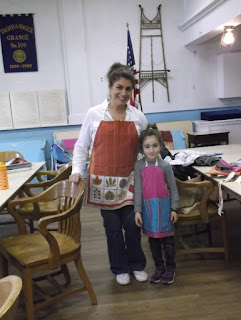"The weather for Lasagna Day was pleasant and sunny, perfect for a day making lasagna. We started by milking Betsy. Everyone had a turn milking her or sponging away the flies that pestered her as Betsy chewed on her breakfast.
Afterward, we harvested fresh vegetables from the garden to put into our sauce. Along the way we looked at the bees, which make the honey we needed for our pasta sauce. We had to be careful around them because the drought has made it difficult for them to find enough nectar. At the same time, they have to protect their nests from robber bees that will steal the nectar they've collected. Because there was so little nectar, they are producing little honey, so we did not collect any. It is humbling to think how climate and weather changes impact cycles we take for granted.
After collecting vegetables, we chopped them up to boil into sauce; collected eggs, ground wheat into flour, and made pasta; crunched bread crumbs from stale bread to mix into our cheese layer. Other people shook jars of heavy cream until it turned into butter. The butter was used to saute veggies for our sauce and in making the garlic bread we had with our lasagna and pot luck lunch.
 | ||
| Adding vinegar to curdle hot milk |
After
lunch, we mixed parsley with curds of vinegar cheese made from the milk we had
collected that morning.
And finally, it was time for us to make our lasagnas. There was enough for each family to make lasagnas to bring home with them.
There were a few things we did not manage to fit into our lasagna day. We enjoyed making lasagna so much that we ran out of time to make mozzarella cheese! Debra sent us home with the printed recipe from New England Cheese Making Supply, rennet, and citric acid so we could try it on our own.
Even without it, though, the lasagnas were
delicious."





















































